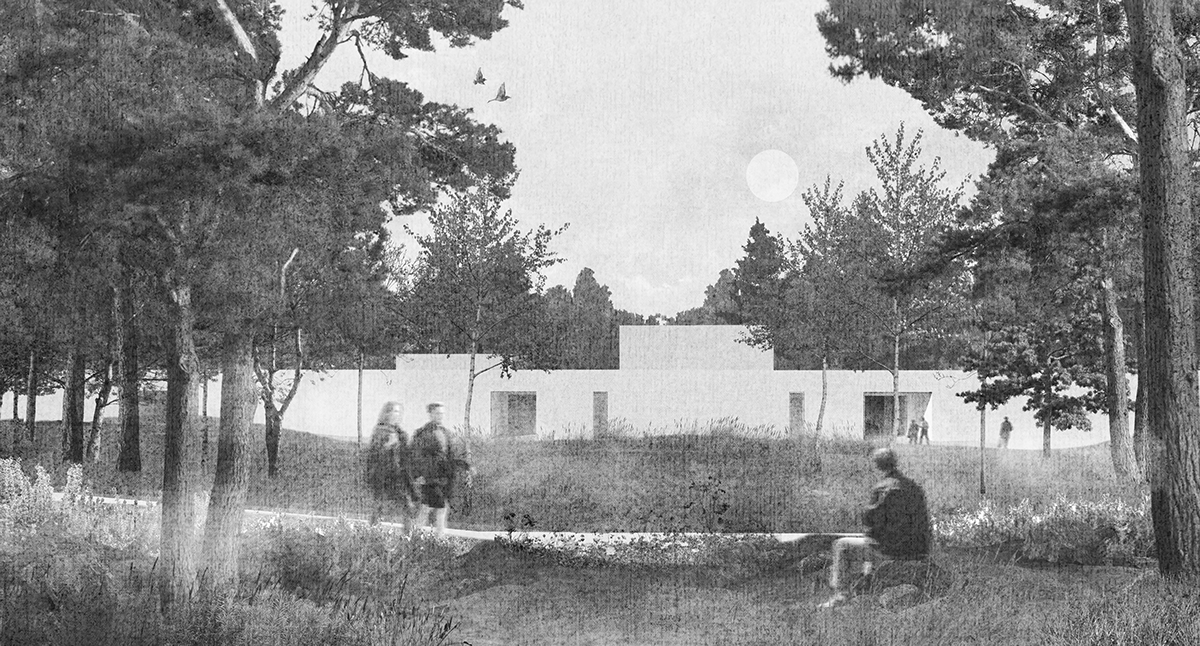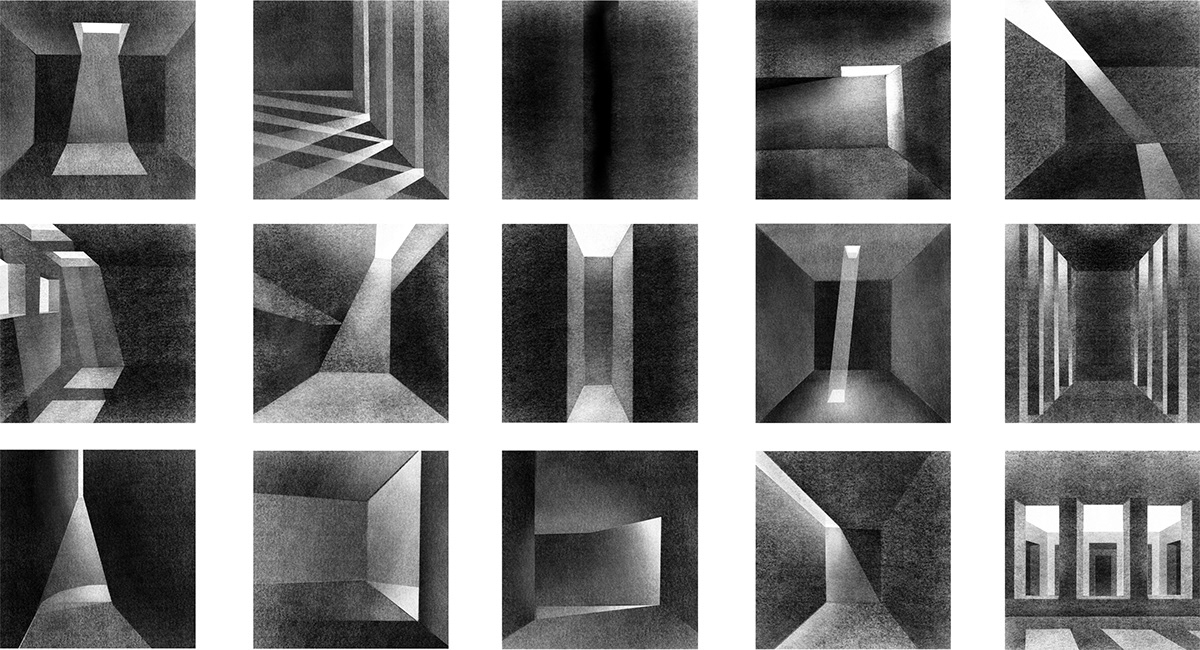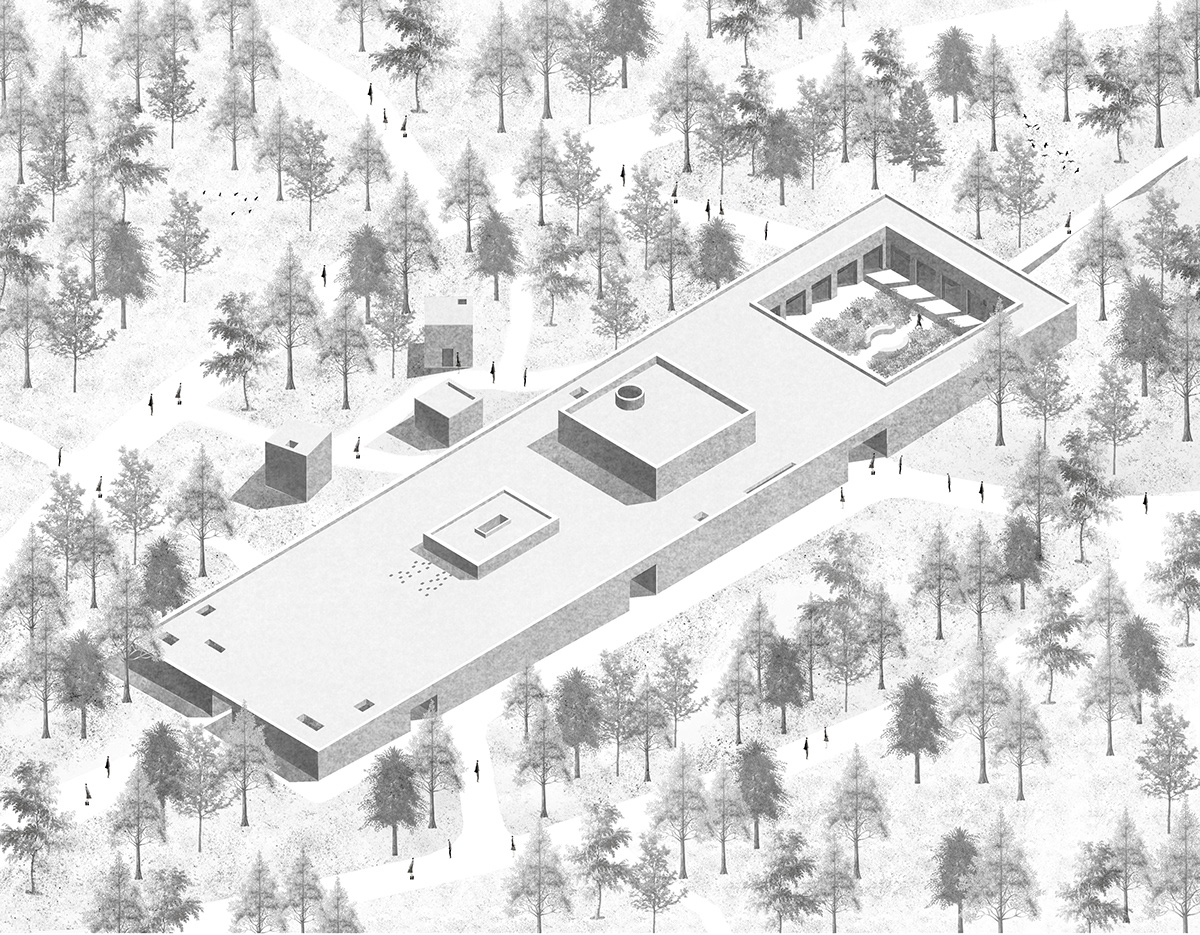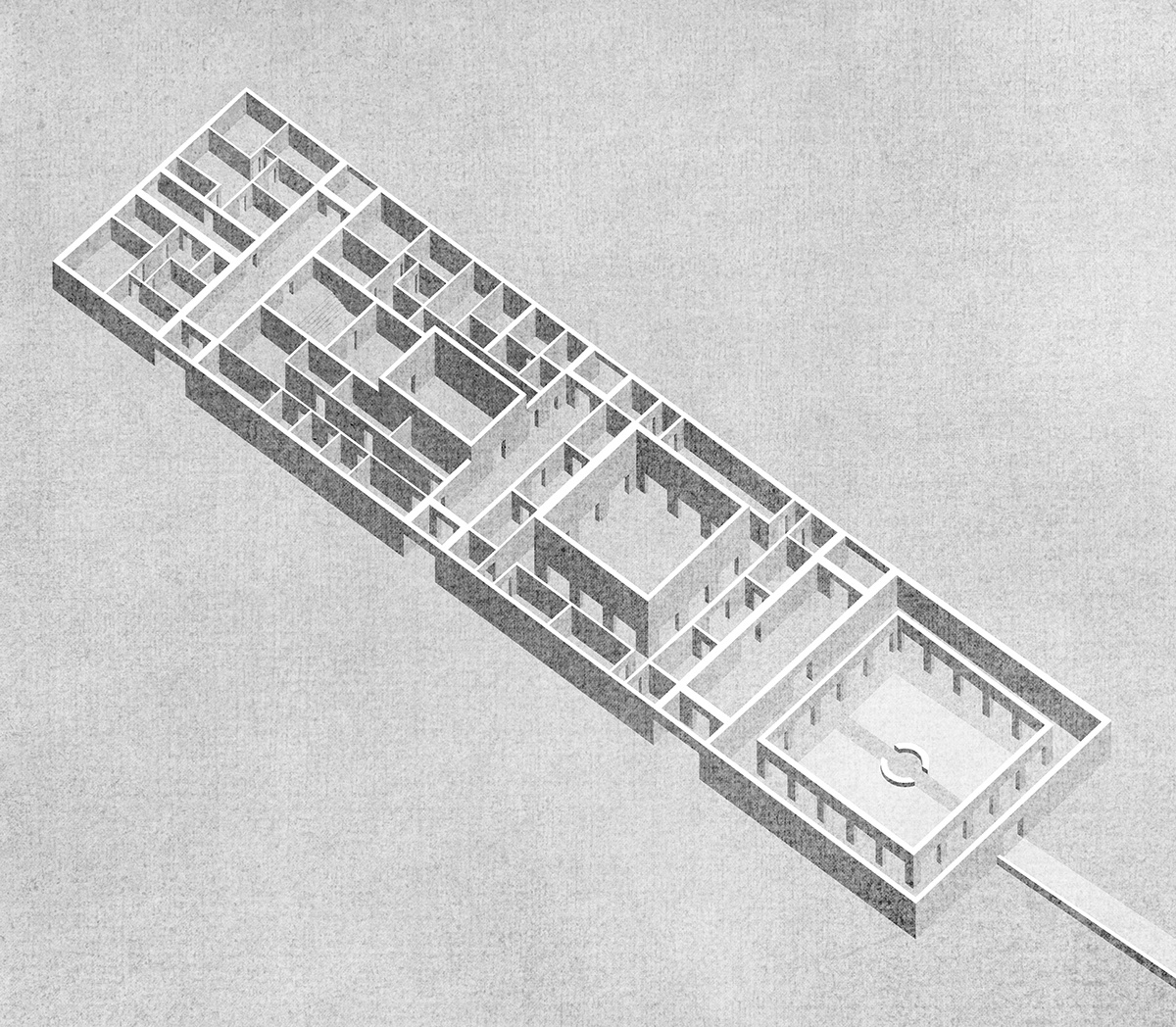FUNERAL OBJECT
universal chapel of the last farewell
problems of contemporary forms of burial
- master's degree project -.
March 2024
authors: Sandra Namyślak

The result of the considerations contained in the theoretical and analytical part, is the design of a universal chapel of the last farewell with accompanying parts. The project became a response to the problems of contemporary forms of burial and the disappearance of the need for a proper experience of mourning. The sacred character was achieved by introducing a specific narrative and symbolism. The project enters into a dialogue with the user, additionally being his companion and guide.

Thanks to the in-depth analysis in the theoretical work, light became the starting element for shaping the mood and narrative in the project. This is because it constitutes one of the most important universal symbols. Appropriate play with light can evoke specific emotions and feelings in the viewer. In addition, it can help to go through difficult moments, enter a state of meditation and come to an understanding with one's own thoughts. Based on the conclusions, a number of graphics depicting the play of light in interiors were created. Each form expressed in chiaroscuro refers to the emotions that accompany mourning. These emotions were named and illustrated by the play of light and shadow in the interior. The illustrations were the starting point for designing the mood and narrative in the object, and also provided a starting point in shaping the interiors.

Initial considerations about the massing were the result of thinking about axial solutions, which would relate their form to ancient temples of antiquity. This reference would be a response to the problem of modern forms of burial. The ancient "houses of eternity" and burial temples formed an organized structure, shaped on the basis of a sacred axis and orthogonal elements. The plan of this type of temple often consisted of three main parts, each aligned axially. In addition, the more intimate the space, the lower and darker it was. Each successive room was less and less illuminated. A similar procedure was used in the designed funeral facility. All the most important spaces were designed on a "sacred axis." The further one enters the facility, the less light reaches it. With the gradation of intimacy, the size of the room changes. This translates into both its function and the narrative of the building.

A number of universal symbols were used in the design. Thanks to them, an important narrative appeared in the project, which gave the building an additional sacred dimension so necessary, every person. The main element responsible for the narrative in the building, is the path of farewell. It was used as an element to help the bereaved pass properly. The path can be traveled in different ways, depending on the needs of visitors. The object is a form of carrier of grief and pain, a companion in the experience of mourning.

The most important essence of the project, became the creation of a narrative suitable for the proper experience of mourning.
Due to the modern tabooization of the concept of death and the increasing secularization of society, mourning is pushed to the background. It is known from clinical research that it is essential for restoring emotional and mental balance, after the loss of a loved one. The building is intended to be a form of pathway through the emotions that are experienced during mourning, and additionally to be a guide to lead us through the process. The building was designed in the form of a gate - it represents a symbolic passage through this difficult stage.
Due to the modern tabooization of the concept of death and the increasing secularization of society, mourning is pushed to the background. It is known from clinical research that it is essential for restoring emotional and mental balance, after the loss of a loved one. The building is intended to be a form of pathway through the emotions that are experienced during mourning, and additionally to be a guide to lead us through the process. The building was designed in the form of a gate - it represents a symbolic passage through this difficult stage.

Various scenarios for moving around the building have been provided in the design, in such a way that the paths do not excessively intersect with each other. The full path of farewell, takes us through the entire facility. Beginning with the most intimate prayer in the meditation chapel, we then move sequentially through the hall of tranquility, waiting, coffin display, and finally arrive at the chapel, where we can say goodbye to the deceased together with everyone else. In traversing this path we are accompanied by light, at the very beginning we pass through dark and gloomy rooms. The lack of light reflects the first emotions we deal with after death - anger, malice, rejection. The further we go into the building - we travel further, the more light accompanies us. It thus builds our hope for a better tomorrow. Eventually we go out into the outside world, into the courtyard - a symbol of paradise and connection to the universe. The final step is to enter on the ramp, which symbolically "lifts us to the surface" so that we can live again full of hope and love.







